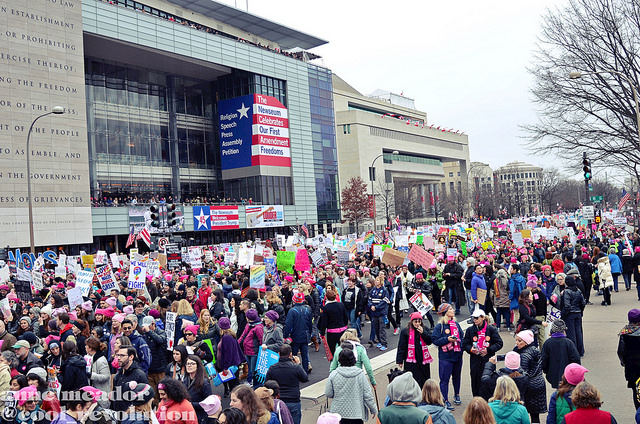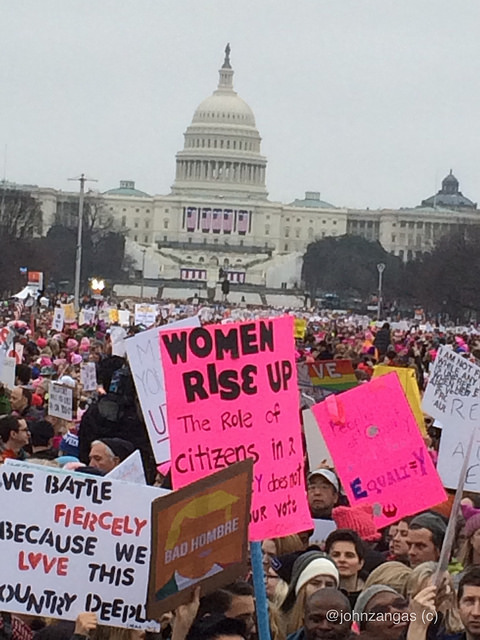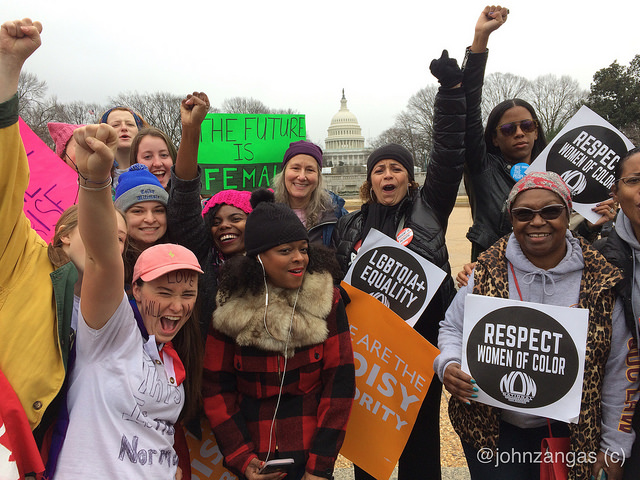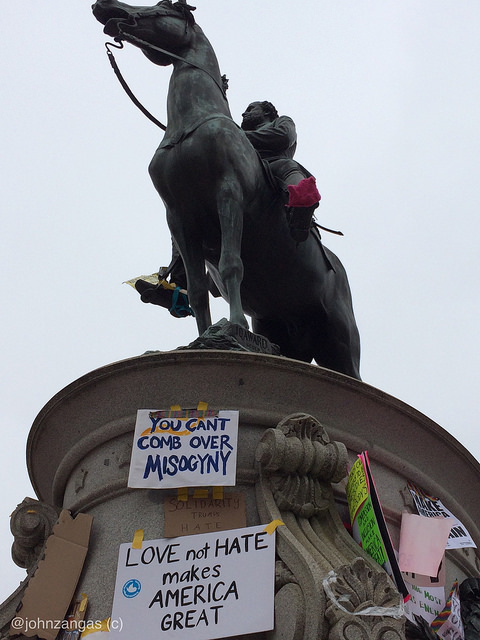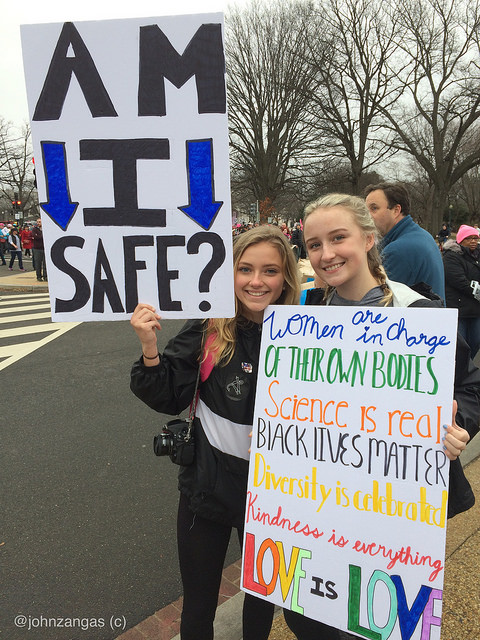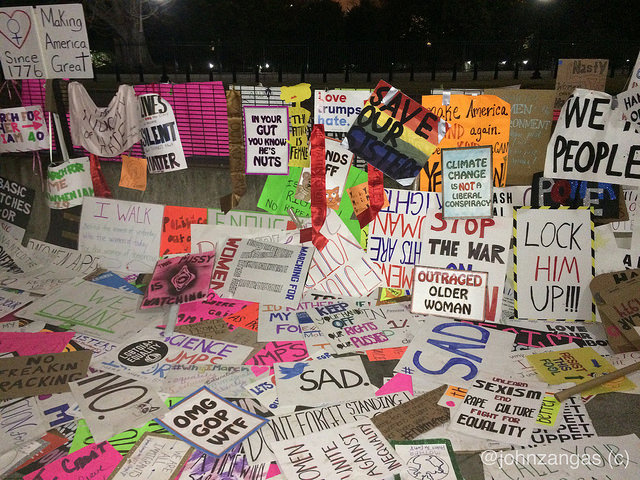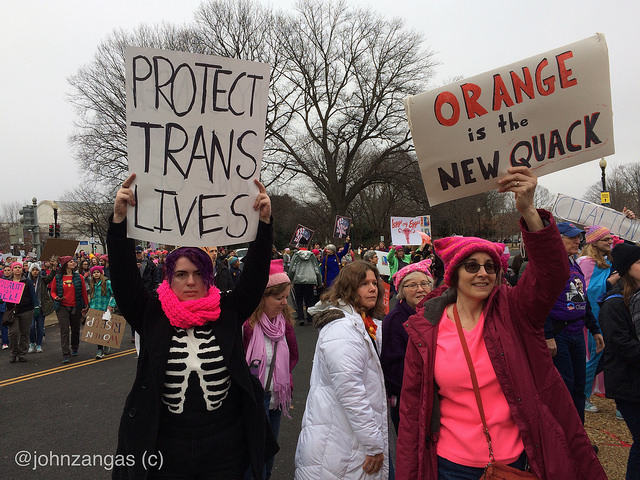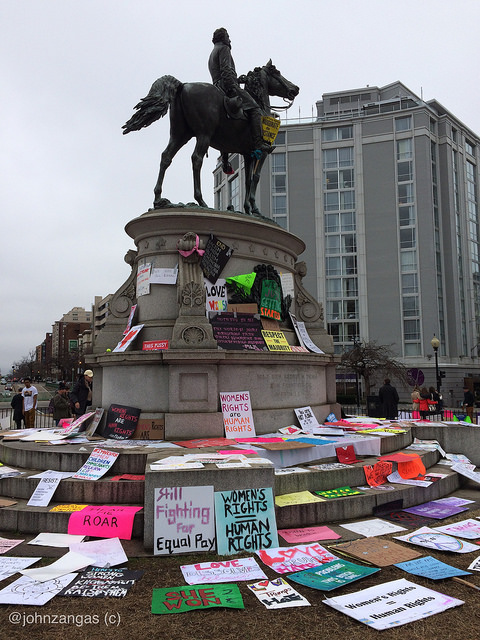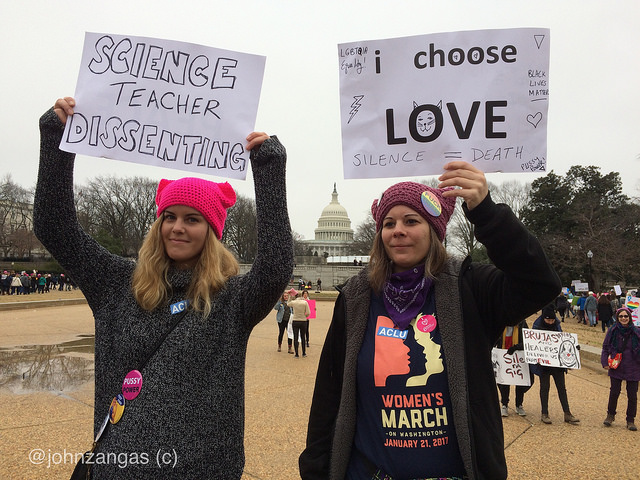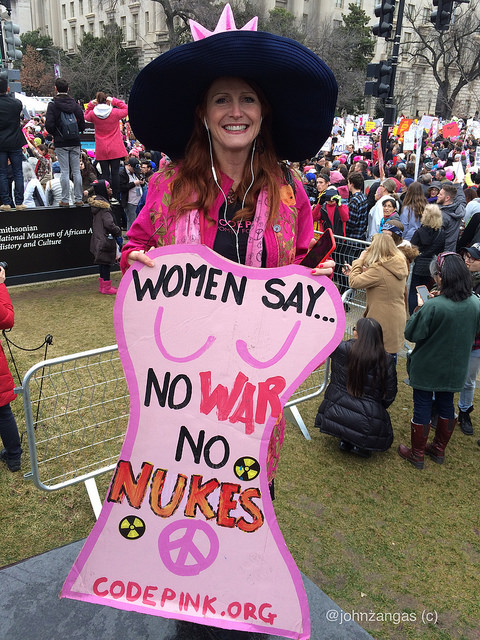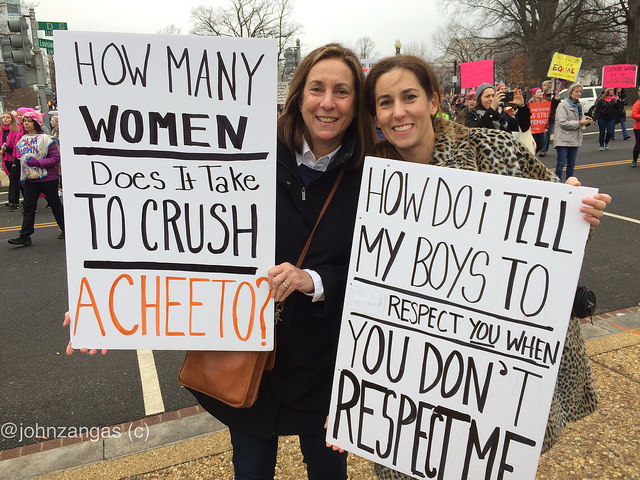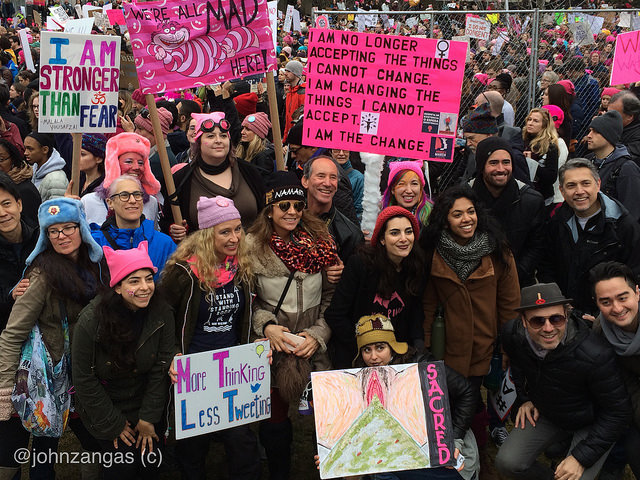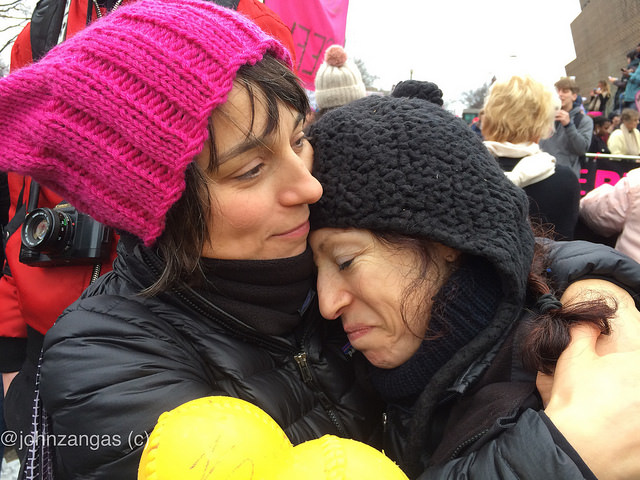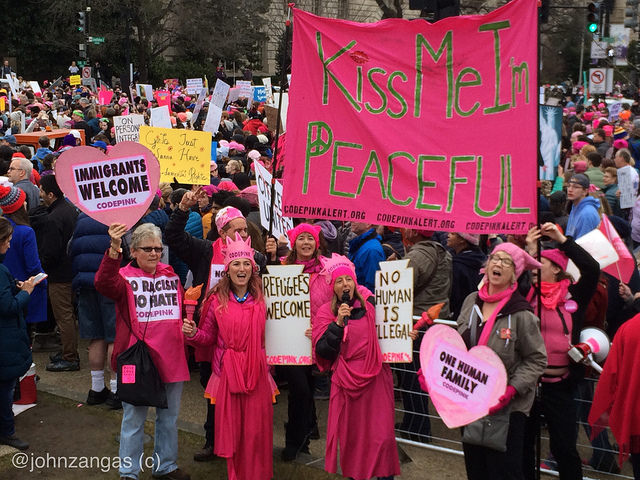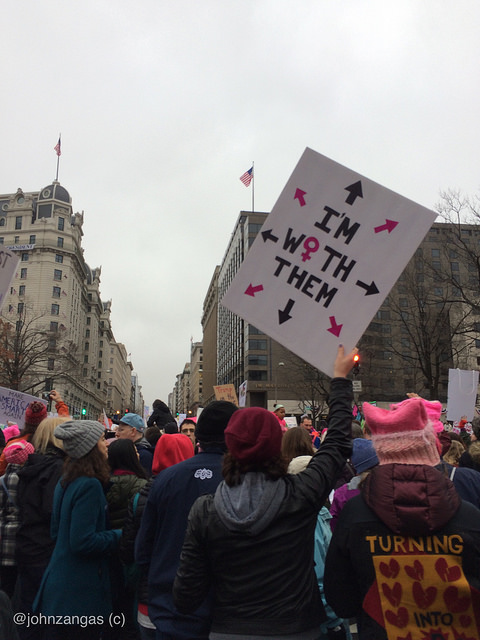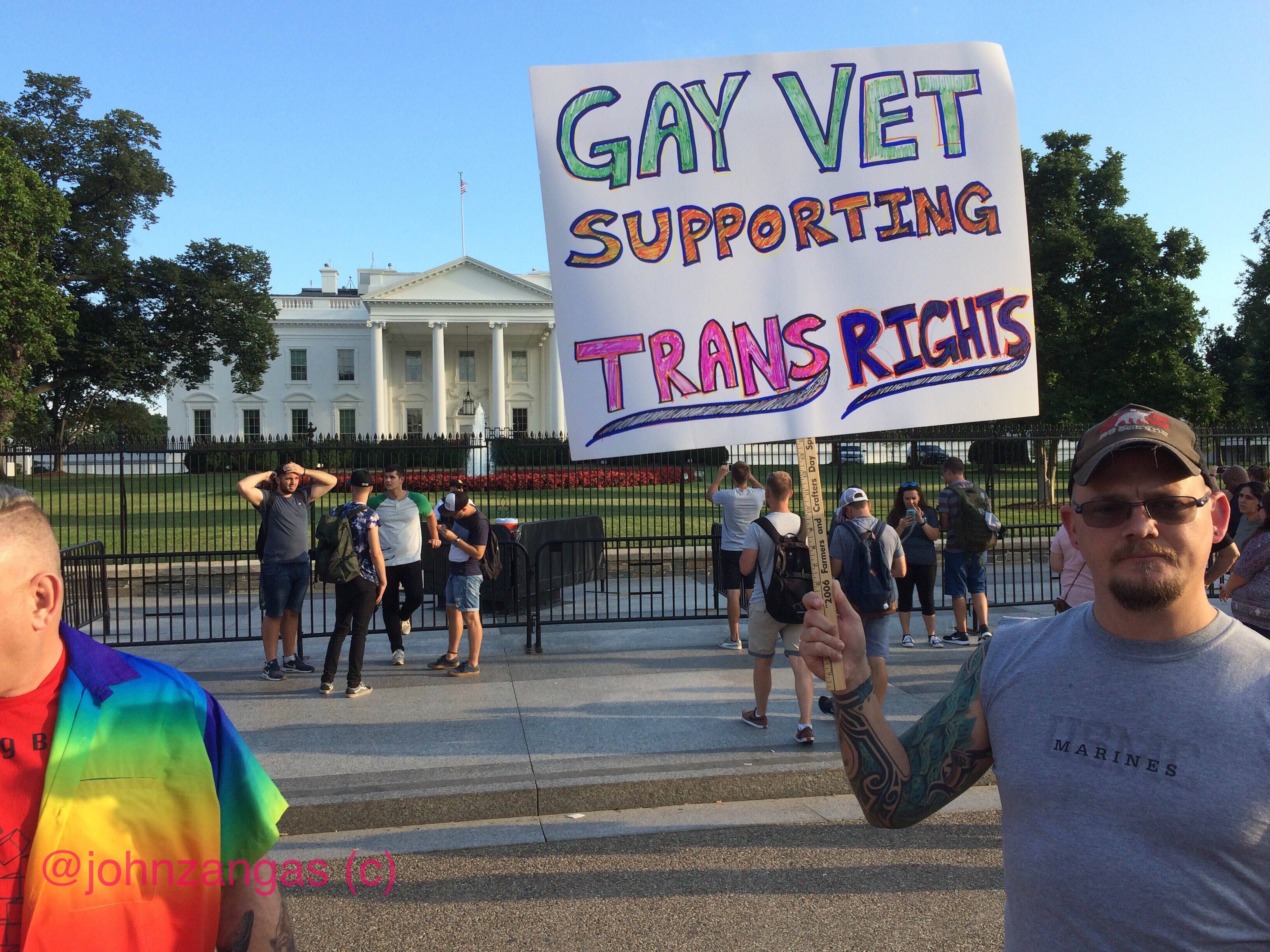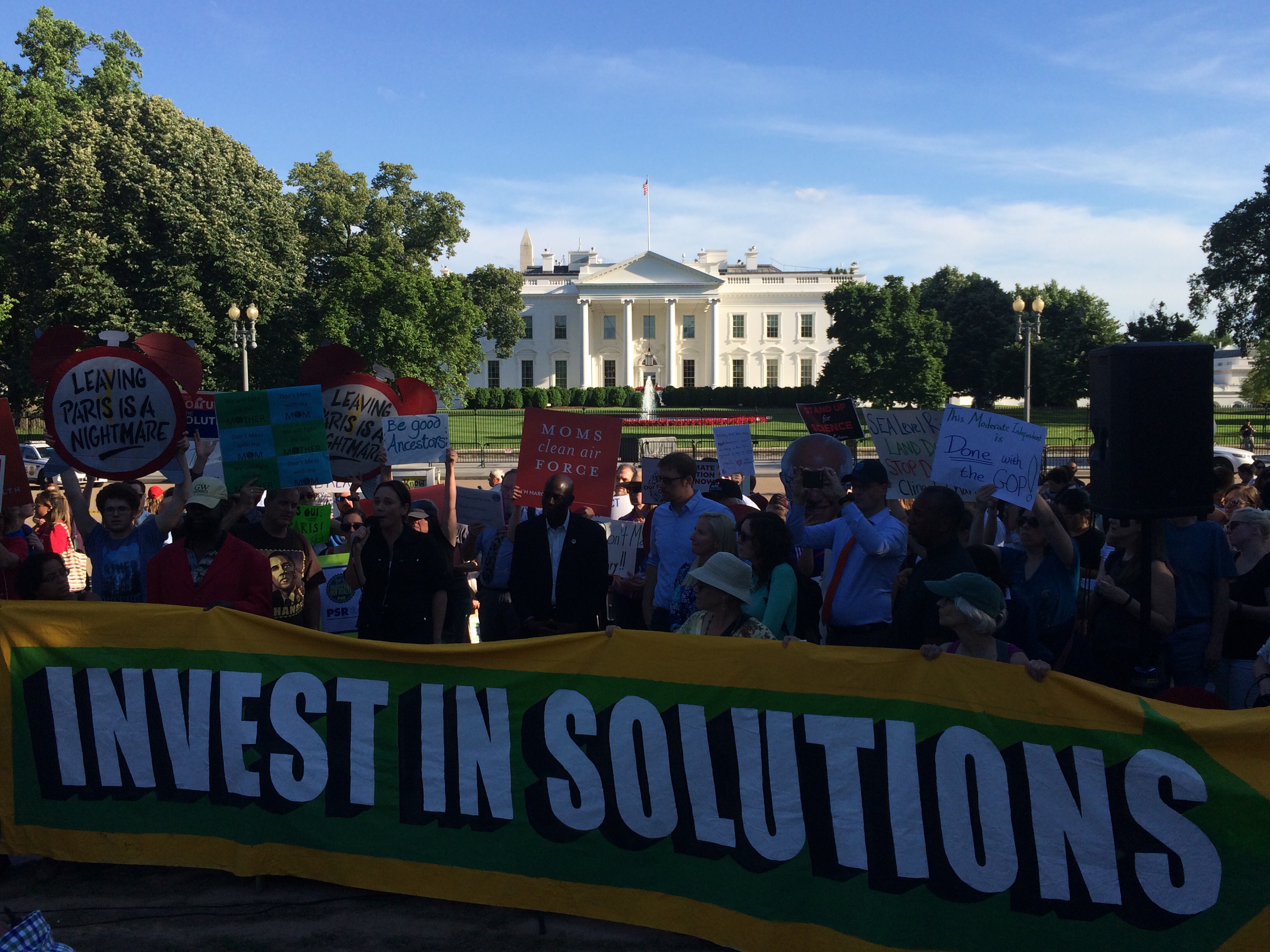Washington, DC–Hundreds of thousands marched Saturday, January 21 from the Capitol building to the White House in what will be recorded as the nation’s largest demonstration for women’s reproductive rights, equality, and economic parity.
The Women’s March on Washington squeezed in hundreds of thousands, completely filling the National Mall. Many wore pink “pussy hats” knitted and donated by volunteers from around the country. The event was created by three women on Facebook the day after the election.
Featured speakers included Planned Parenthood director Cecile Richards, documentarian Michael Moore, renowned feminist Gloria Steinem, march organizer Linda Sarsour, Democrats Van Jones and Debbie Wasserman Schultz, actors America Ferrera, Scarlett Johansson and Ashley Judd, and Malcolm X’s daughter Ilyasah Shabazz. Most participants, however, were unable to hear the speeches and performances because the sound system did not reach far enough. This was because the turnout was far higher than the 100,000 participants the organizers had anticipated.
A sea of pink hats swayed as marchers joyfully cheered in celebration, united in conversations, songs and chants. Many found camaraderie in their concerns about reproductive rights, equality, and dignity. There was an underlying feeling of urgency to head off sweeping changes promised by President Trump, sworn in the day before.
The arrest-free event marked a sharp contrast to the police crackdown on protests of the previous day during Trump’s inauguration. On Friday, riot police used teargas and concussion grenades against protesters in the District’s K Street business area, and over 200 were arrested. Some of the protesters had been blocking street access to the inauguration. The city hadn’t seen such aggressive police tactics since the anti-war protests of the Vietnam era.
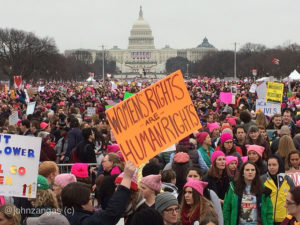
An officer, who spoke unofficially about the Women’s March, said that he estimated as many as 1.2 million had come to the march. In addition to the mall, many streets near the national mall clogged with the hundreds of thousands more, surging toward the White House Ellipse. A project undertaken by Dr. Jeremy Pressman of the University of Connecticut and Erica Chenoweth of the University of Denver estimates the Washington crowd at 500,000 to 680,000. The demonstration dwarfed attendance at Donald’s Trump inauguration the day before.
There were also sister marches held in many other cities across the country, including Los Angeles, New York, Boston, San Francisco, Cincinnati, and Chicago. In Chicago, attendees were forced to stand rather than march, for safety reasons, because there were more people than the route could support.
The Washington, DC event began with a rally, but before keynote speakers had completed their remarks, marchers began surging along Independence Ave., the permitted route, and along the National Mall toward the Washington Monument. Then several large groups broke away and walked up alternate streets.
Marchers joined in waves of cheers and chants which spread along the streets as they walked. They chanted popular rhymes such as, “We want a leader, not a dirty tweeter,” a criticism of Trump’s statements on Twitter, and, “It’s my body,” a statement of concern about the new administration’s plans to defund Planned Parenthood and women’s healthcare.
As marchers passed the White House fence, they left behind handmade signs, which formed a long wall of messages to the new President. They also left hundreds of signs at Trump International Hotel, at major traffic circles–such as McPherson Square and Scott and Logan Circles–and throughout the downtown area.
Many marchers traveled from other states to take part in the historic event, hoping that the march could lead to real progress and true equality for women.
A high school teacher from Columbus Ohio, named Jodi, wore a pink t-shirt with messages written on it from her students telling why she needed to march. “I think this is right, and it is what we need to do,” she said. She teaches English as a second language, and her students wrote messages in their native languages on the shirt she wore.
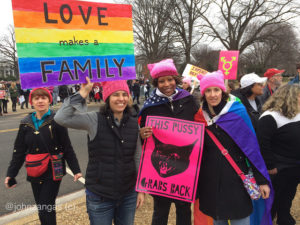
“It’s phenomenal to see all these people come together with a goal to unity in our beliefs,” said Tonya, a resident of Maryland, who was participating in her first march. “I’m hoping this can be the start of something bigger, a strong movement.” She said remarks about women by the new president “made me sick” but she hoped that the movement could keep the momentum going after today.
“Men should always treat women with respect, and I think that’s something that’s been lacking with this president,” said Todd, a man who traveled from Maryland. He also said that culture treats women badly, and it is every man’s responsibility to address cultural issues.
The platform for the Women’s March on Washington was not meant as an anti-Trump march, according to the organizers. But as Ohio attorney Thomas Cochran said, “This is certainly a march for women’s rights and women’s reproductive rights and for the dignity of women, but you can’t really look at it without seeing it as a rejection of the Trump regime.”
Worldwide, between 3.6 and 4.2 million people participated in protests coordinated with the Women’s March, but it remains to be seen how organizers will be able to capture the new energy and enthusiasm and convert it into a movement. It is certain however that women had taken a giant step in common cause.
- The Women’s March proceeds down Pennsylvania Ave. in front of the Newseum./Photo by Anne Meador

